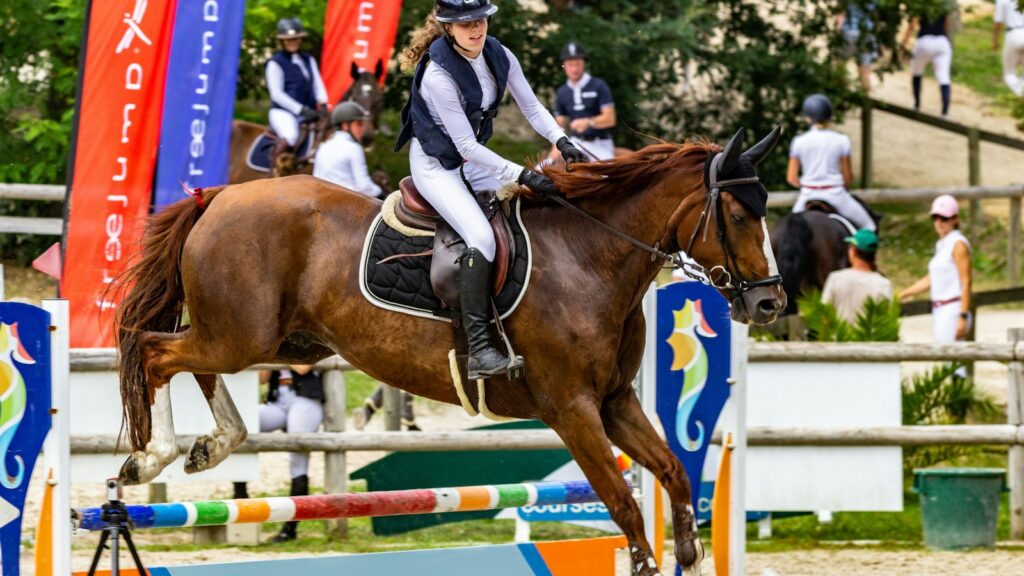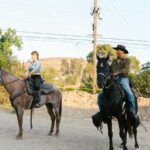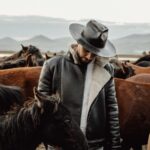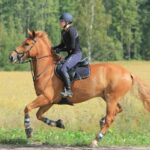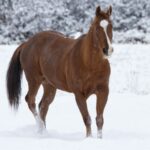Show jumping demands exceptional physical fitness, mental fortitude, and technical skill from both horse and rider. The elite performers in this discipline don’t rely on natural talent alone—they follow structured training regimens designed to enhance every aspect of their performance. Whether you’re a competitive rider aiming for grand prix success or an enthusiast looking to improve your skills, the right training routine can make all the difference in your show jumping journey. This article explores comprehensive training approaches that balance physical conditioning, technical practice, mental preparation, and essential recovery periods to help riders reach their full potential in the arena.
Understanding the Physical Demands of Show Jumping
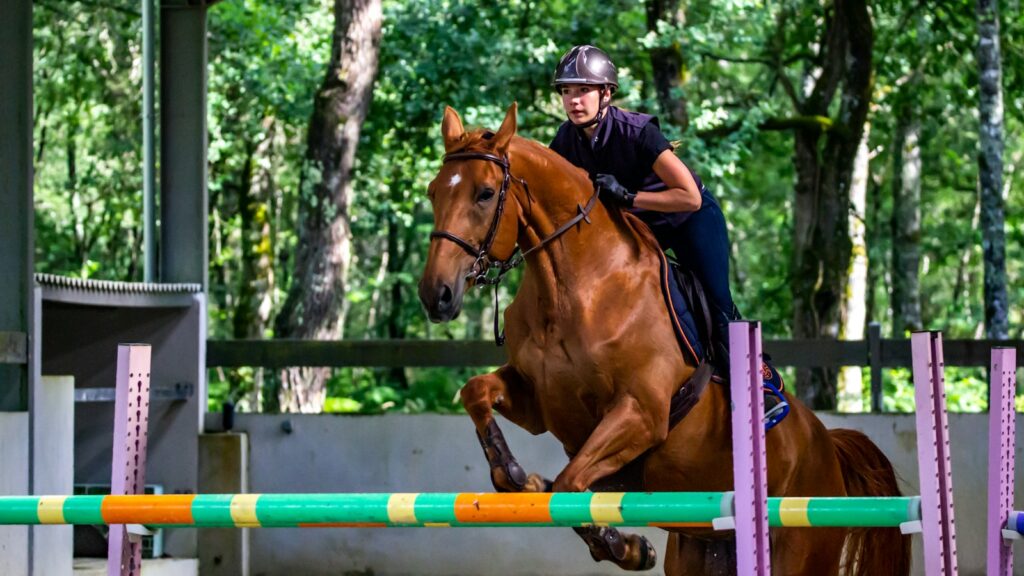
Show jumping places unique physical demands on riders that many outside the sport fail to recognize. The rider must maintain perfect balance while navigating courses at speed, absorbing impact through jumps, and communicating subtle aids to their horse. Core strength forms the foundation of effective riding, allowing riders to maintain their position without gripping with the legs or hands, which would restrict the horse’s movement. Cardiovascular endurance becomes crucial during longer courses or multiple rounds, where maintaining concentration and precise control requires sustained energy. Additionally, riders need leg strength for proper position and effective aids, upper body control for maintaining a stable yet supple position, and overall flexibility to absorb the horse’s movement without tension. Understanding these specific demands allows riders to develop targeted fitness routines that translate directly to improved performance in the saddle.
Core Strengthening: The Foundation of Riding Fitness
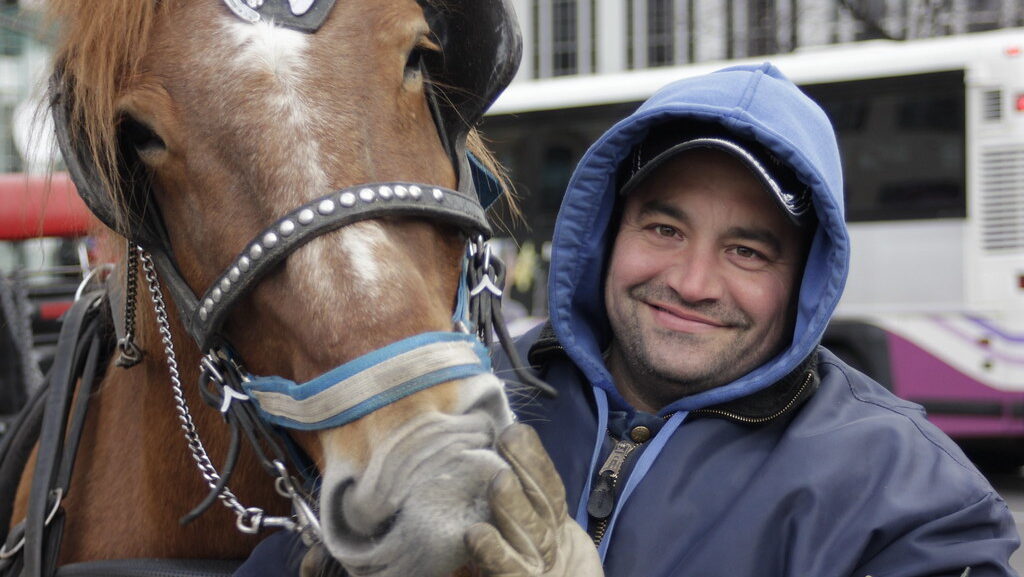
A strong core serves as the cornerstone of effective riding, providing stability while allowing the limbs to move independently and precisely. Exercises like planks in various positions (front, side, and with limb movements) directly translate to the ability to maintain position over jumps while remaining responsive to the horse’s movements. Pilates-based exercises prove particularly valuable for riders as they focus on controlled, precise movements that develop the deep stabilizing muscles most crucial for riding. The “hollow body” position, maintaining a neutral spine while engaging the abdominals, mimics the controlled core engagement needed when approaching and landing from jumps. For advanced riders, incorporating unstable surfaces such as exercise balls or BOSU trainers can further challenge core stability systems, simulating the balance challenges encountered when riding over varied terrain or through complicated jumping combinations.
Lower Body Training for Effective Leg Aids
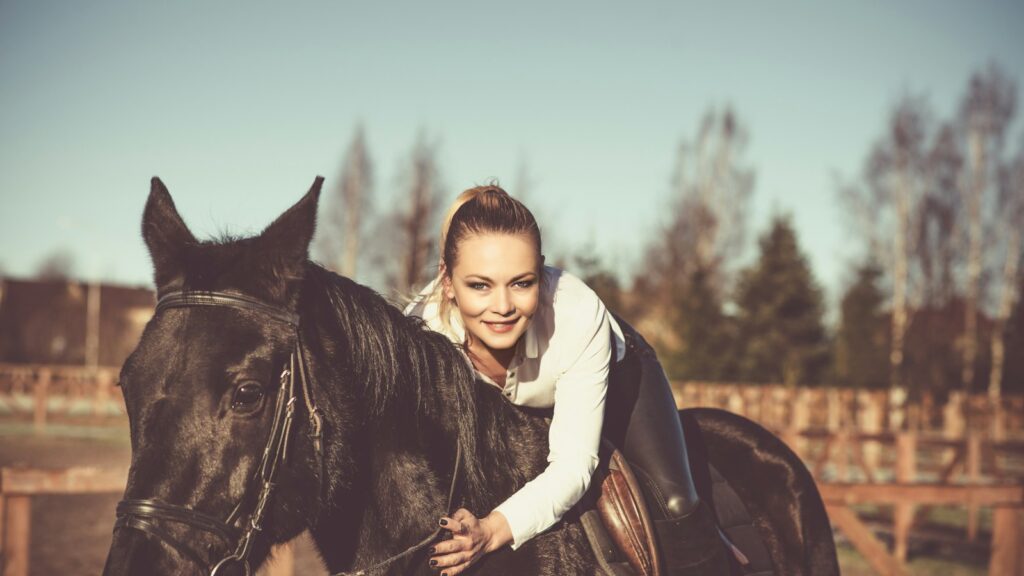
Strong, stable legs provide the foundation for clear communication with the horse through precise aids and a secure position over jumps. Functional exercises like squats and lunges should form the backbone of a rider’s lower body routine, focusing on proper alignment and control rather than simply building mass. Incorporating balance challenges, such as single-leg deadlifts or Bulgarian split squats, develops the stabilizing muscles needed for maintaining an independent seat. For show jumping specifically, plyometric training (such as jump squats or box jumps) can develop the explosive strength needed to maintain position during the landing phase of jumps, where forces of up to three times the rider’s body weight must be absorbed. Riders should also prioritize hip mobility work, as tight hip flexors can lead to a chair seat position that compromises effectiveness over fences and contributes to lower back pain.
Upper Body Development for Refined Rein Contact
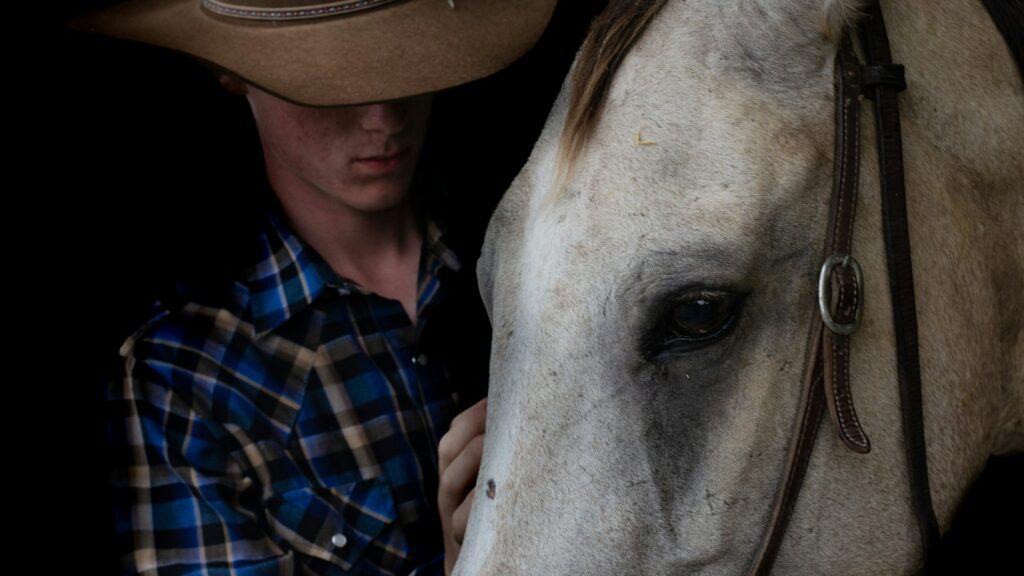
While riders often focus primarily on lower body strength, the upper body plays a crucial role in maintaining consistent, sensitive rein contact and an effective position throughout jumping courses. Controlled pulling exercises such as rows and lat pulldowns develop the back muscles that support proper posture and prevent the common fault of rounding the shoulders or collapsing forward after jumps. Shoulder stability exercises using resistance bands help riders maintain an independent hand position even when the horse makes unexpected movements. Importantly, upper body training for riders should emphasize endurance over bulk, focusing on higher repetitions with moderate weight to develop functional strength that doesn’t restrict movement. Including rotational exercises like Russian twists or medicine ball throws enhances the rider’s ability to use their upper body effectively during tight turns or when adjusting position mid-course without disrupting balance or rein contact.
Cardiovascular Conditioning for Course Endurance
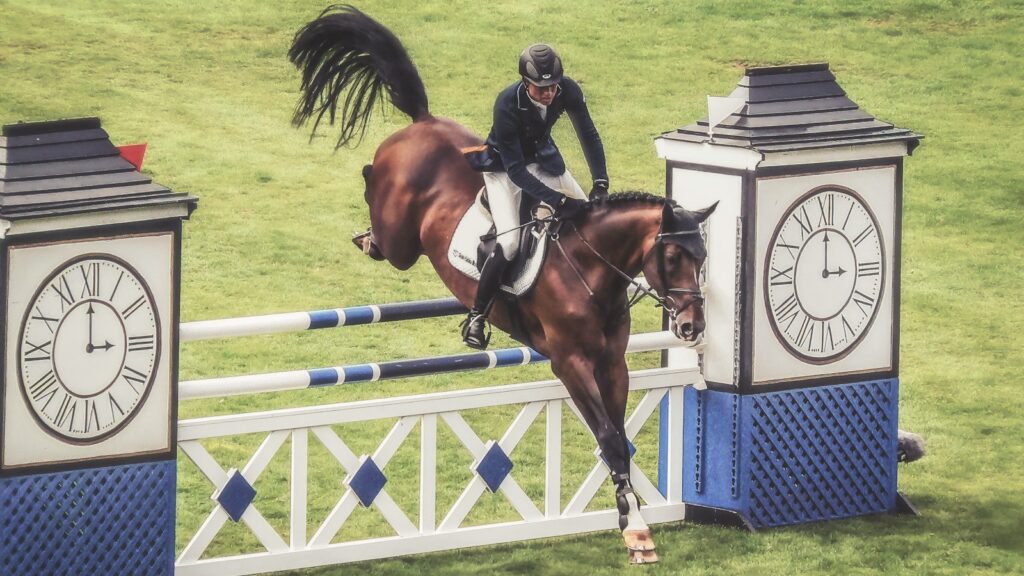
Show jumping demands cardiovascular fitness that allows riders to maintain mental clarity and physical precision from the first fence to the last, even in jump-offs where intensity increases dramatically. Interval training proves particularly effective for riders, mirroring the periods of intense effort followed by brief recovery that characterize a typical jumping round. High-intensity interval training (HIIT) sessions of 20-30 minutes, alternating between maximum effort and active recovery periods, condition the heart and lungs while improving the body’s ability to clear lactic acid during intense efforts. Cross-training activities like cycling maintain cardiovascular fitness while being gentle on joints, making them ideal for riders who need to protect their knees and ankles from riding. For competition preparation, riders should gradually increase the duration of their cardio sessions to build the stamina needed for longer courses, particularly important when competing in multiple rounds or on consecutive days at major competitions.
Flexibility and Mobility Work for Fluid Riding
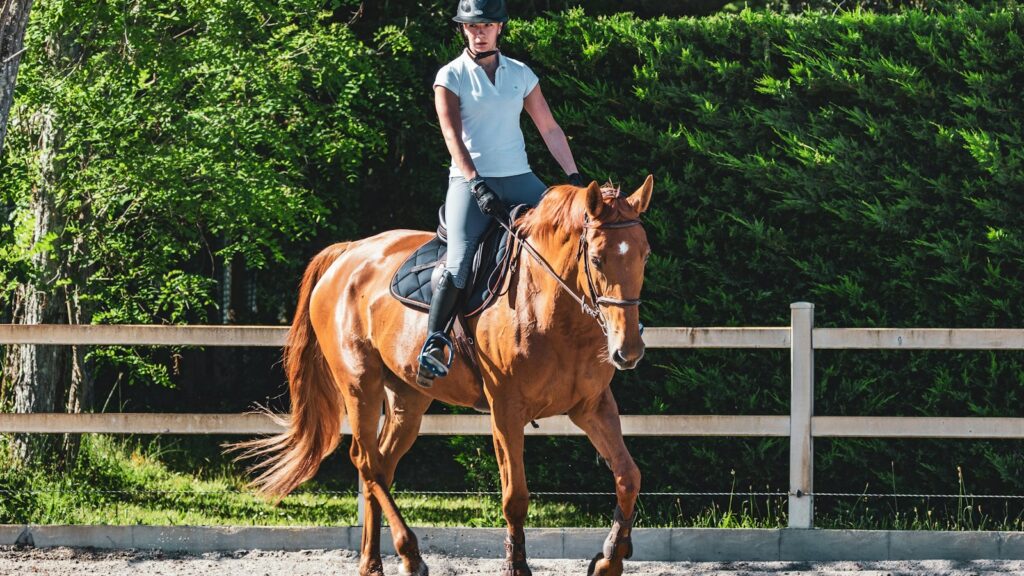
Proper flexibility and mobility allow riders to absorb their horse’s movement without tension, resulting in clearer communication and more effective position adjustments throughout a course. Hip flexor stretches should be prioritized, as these muscles become particularly tight in riders and can restrict proper leg position when shortened. Dynamic stretching before riding prepares the body for movement, while static stretching after workouts or rides helps reset muscle length and prevent the development of compensatory patterns. Yoga practices specifically benefit riders by combining strength, balance, and flexibility work while emphasizing the mind-body connection essential for harmonious riding. Mobility work for the thoracic spine and shoulders proves particularly valuable for jumper riders, as these areas need to remain supple to maintain an effective upper body position while navigating technical courses at speed.
Balance and Proprioception Training
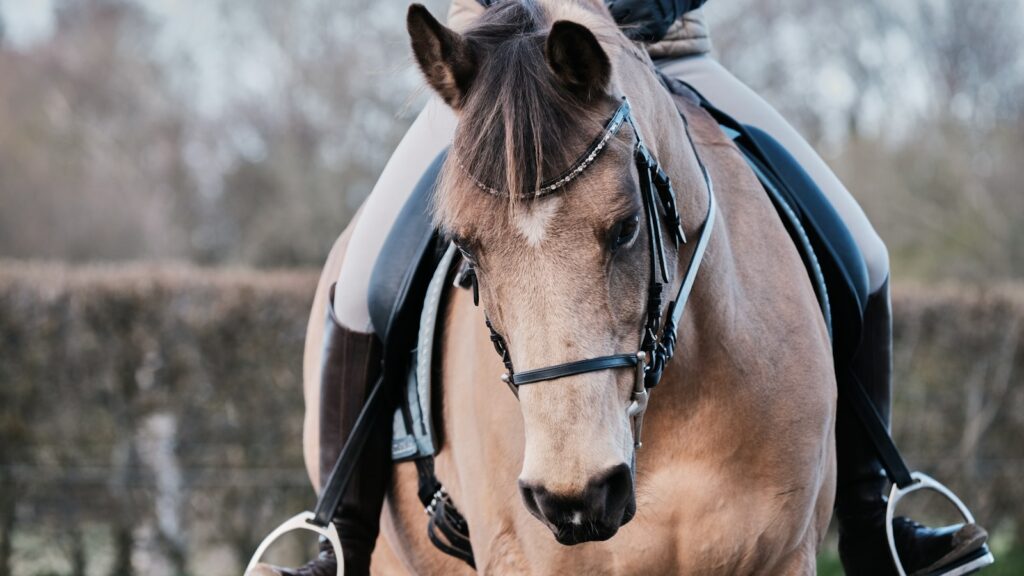
Exceptional balance and body awareness separate elite jumper riders from average competitors, allowing for precise adjustments and corrections without disrupting the horse’s balance. Balance training on unstable surfaces like BOSU balls, wobble boards, or balance discs develops the proprioceptive system, improving the rider’s unconscious awareness of body position. Single-leg exercises with eyes closed challenge the vestibular system, enhancing the rider’s ability to maintain position during unexpected movements from the horse. Incorporating balance challenges into strength exercises (like performing shoulder presses while standing on one leg) creates functional training that directly translates to the saddle. Advanced riders might consider specialized equipment like slacklines that develop the subtle adjustments needed to maintain balance over jumps, particularly useful when riding forward distances or managing difficult combinations.
Developing an Effective Gym Routine
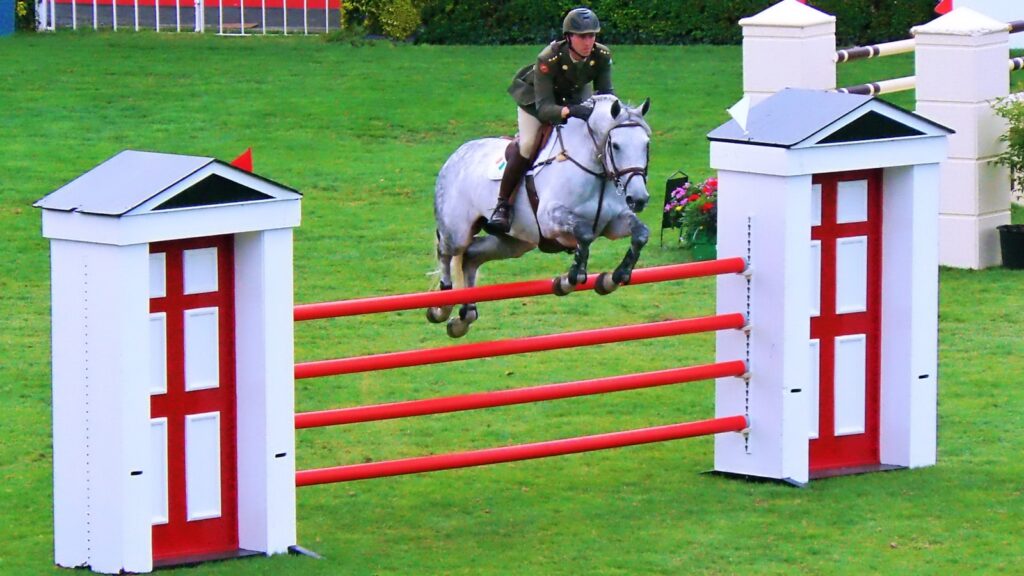
Creating a gym routine specifically designed for show jumping demands strategic planning to complement riding activities without causing excessive fatigue. Most riders benefit from 2-3 strength sessions weekly, ideally scheduled on non-riding days or after less intensive schooling sessions. Each workout should begin with a proper dynamic warm-up focusing on the hips, shoulders, and thoracic spine to prepare these key riding joints for movement. The core of each session should include compound movements that train multiple muscle groups simultaneously, such as deadlifts, lunges with rotation, or pull-ups, reflecting the integrated nature of riding movements. Intensity should be periodized throughout the competition season, with heavier training during off-season periods and maintenance work during peak competition times. Working with a fitness professional who understands equestrian demands can be invaluable in designing programs that address individual weaknesses while preventing overtraining of already stressed muscle groups.
In-Saddle Training Exercises
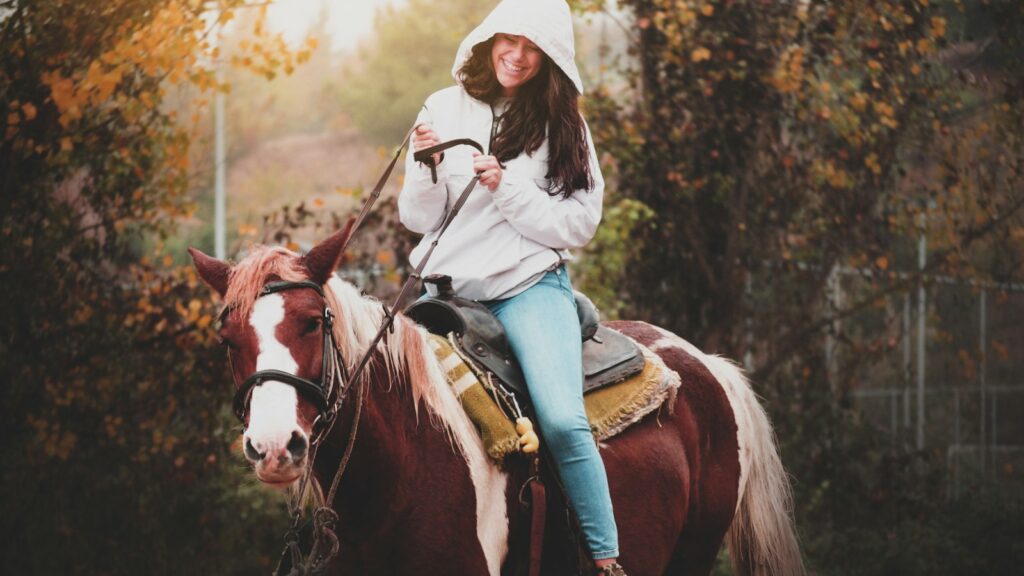
Physical conditioning must be complemented by specific in-saddle exercises that develop technical skills and apply fitness improvements to actual riding scenarios. No-stirrup work remains fundamentally important for developing the independent seat and leg strength needed for maintaining position through complex jumping courses. Incorporating regular sessions of two-point position holds (rising off the saddle while maintaining balance over the horse’s center of gravity) builds the specific endurance needed for jumping positions. For technical development, the grid work, with systematically placed poles and jumps, trains the rider’s timing, balance adjustments, and ability to maintain a consistent position through multiple efforts. Advanced riders should regularly incorporate exercises that challenge automatic responses, such as jumping courses without stirrups or reins knotted, forcing the development of core stability and balance rather than relying on rein support or gripping with the legs.
Mental Training Strategies
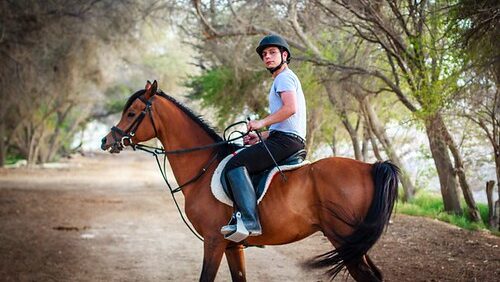
Physical preparation represents only half of comprehensive show jumping training, with mental conditioning often determining success at higher levels of competition. Visualization practices should become part of daily routines, with riders mentally rehearsing courses in precise detail, including how they’ll handle potential challenges or mistakes. Developing consistent pre-ride routines creates psychological triggers that help riders enter their optimal performance state regardless of environmental pressures or distractions. Mindfulness training improves the ability to stay present and focused during rounds, preventing the common problem of dwelling on a previous fence error while approaching the next obstacle. Competitive stress management techniques, including controlled breathing exercises and cognitive reframing strategies, help riders maintain composure and make clear decisions when facing high-pressure situations in major competitions.
Recovery and Injury Prevention
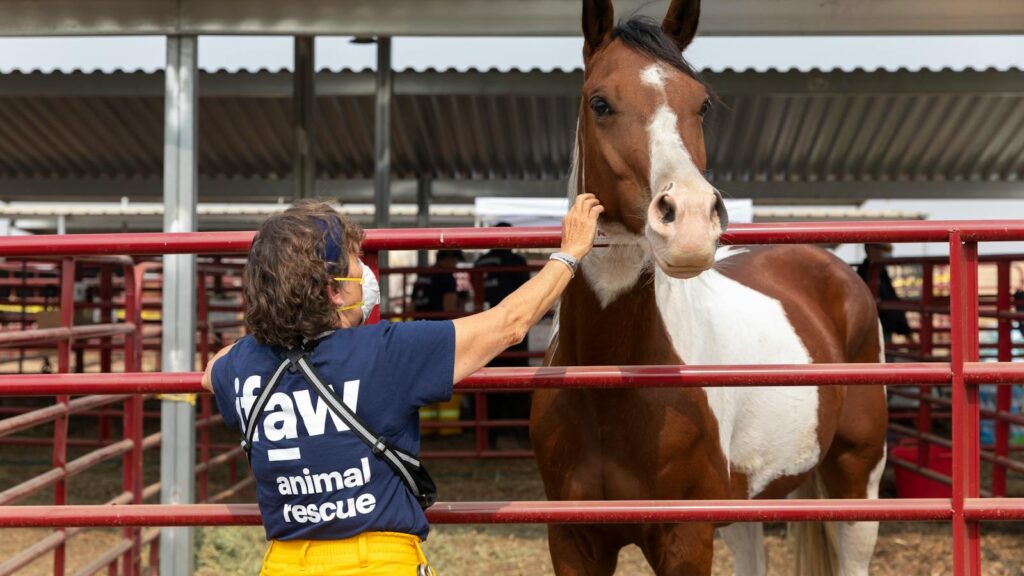
Proper recovery proves just as important as active training in a comprehensive show jumping program, preventing burnout and reducing injury risk. Active recovery days should be incorporated into weekly schedules, featuring low-intensity movement like walking, swimming, or gentle yoga to promote blood flow without creating additional stress. Adequate sleep must be prioritized, as sleep deprivation significantly impairs reaction time, decision-making, and physical coordination—all crucial for safe, effective jumping. Proper nutrition strategies should emphasize anti-inflammatory foods and appropriate protein intake to support muscle recovery and immune function during intensive training periods. Regular bodywork such as massage, chiropractic care, or fascial release helps address the muscle imbalances inherent to riding before they develop into compensatory patterns that can lead to pain or dysfunction.
Creating a Periodized Annual Training Plan
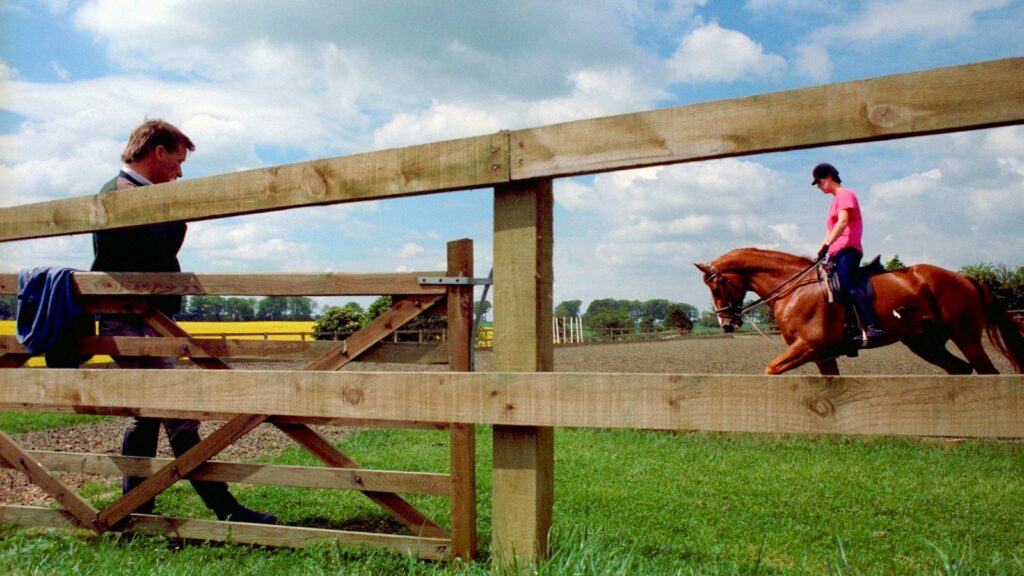
Elite riders structure their training year strategically, ensuring peak performance during major competitions while allowing adequate recovery and development periods. The general preparation phase during the off-season should emphasize building fundamental strength, addressing weaknesses, and developing new technical skills without competition pressure. As competition approaches, training shifts to a specific preparation phase focusing on sport-specific conditioning and refining skills directly relevant to upcoming events. During the competitive season, training typically maintains abilities rather than building them, with volume reduced while intensity remains high to preserve sharpness without causing fatigue. Following major competition cycles, planned recovery periods prevent both physical and mental burnout, typically including reduced riding intensity and alternative physical activities that maintain fitness while providing psychological refreshment.
Monitoring Progress and Adjusting Training
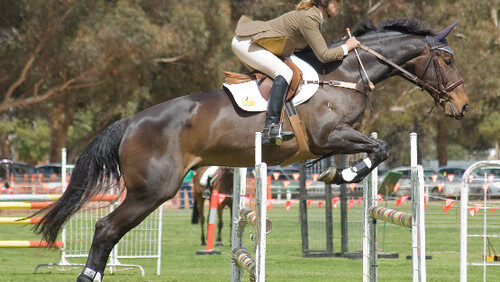
Systematic tracking of both physical metrics and in-saddle performance allows riders to optimize their training approach over time. Keeping detailed training logs documenting both fitness work and riding sessions helps identify patterns in performance and recovery, revealing optimal training frequencies and formats for individual riders. Regular assessment of fundamental metrics like core endurance, balance capabilities, and specific strength markers provides objective feedback on fitness development. Video analysis of riding, particularly comparing footage over time, offers invaluable insight into how physical improvements translate to actual riding effectiveness. The most successful riders maintain a flexible approach to training, willingly adjusting programs based on evidence rather than rigidly adhering to predetermined schedules when progress stalls or circumstances change.
Building the Complete Show Jumping Athlete
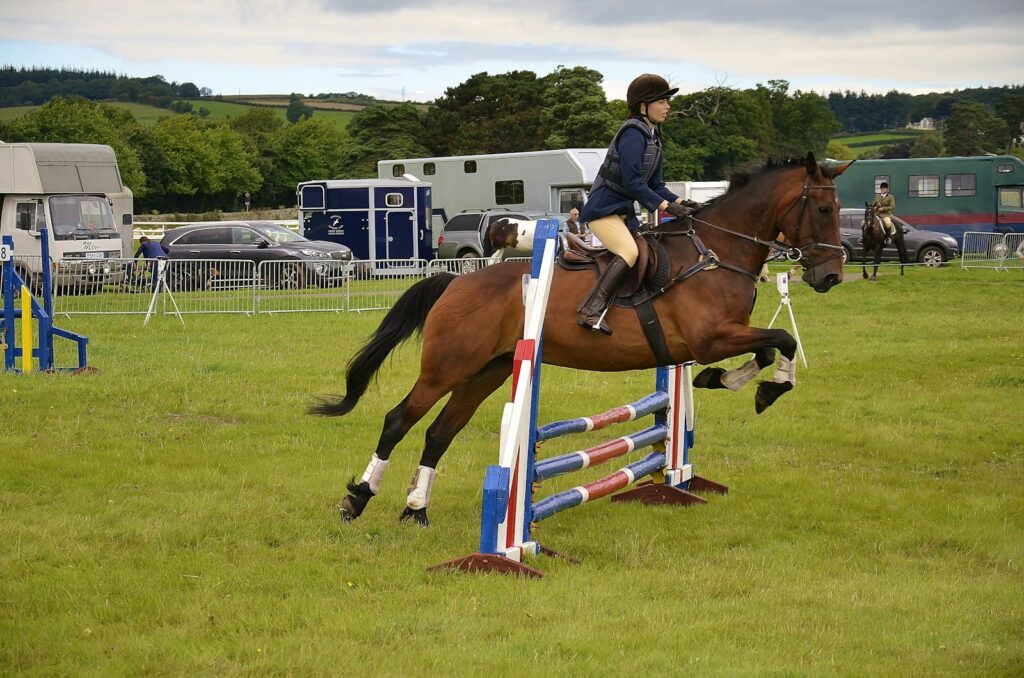
A comprehensive training approach for show jumping riders integrates physical conditioning, technical skill development, mental preparation, and proper recovery cycles. The most successful riders view their athletic development as a long-term process, building sustainable habits that support both current performance and career longevity. By approaching training systematically—addressing the specific demands of the sport while respecting individual differences in physical capacity and recovery needs—riders can maximize their potential in the show jumping arena. Remember that consistency typically trumps intensity; regular, moderate training that can be maintained throughout the competitive season generally produces better results than extreme approaches that lead to burnout or injury. Whether aiming for international competition or local show success, the principles outlined in this article provide a framework for developing the complete athletic package required for show jumping excellence.

